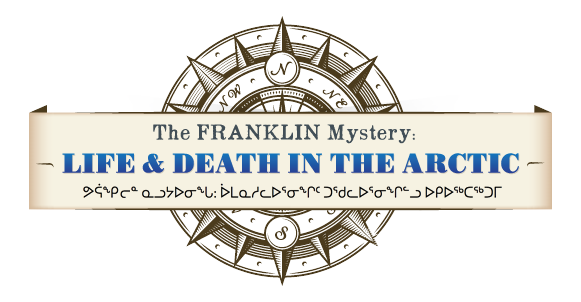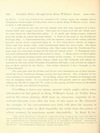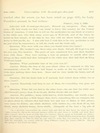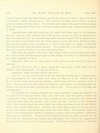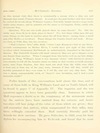Hall Interviews Innookpoozhejook about tents, boats, bodies (1879)
Unwilling to leave any means untried which might add to what information he had gained on King William's Land, at Todd's Isles, and on the return journey, Hall kept up numerous inquiries of In-nook-poo-zhee-jook, even after the date of this letter to Mr. Grinnell. An example of his conversations now held, will show his manner of questioning, in order to elicit hopefully the truth from this native of whose accuracy he sometimes speaks distrustfully. In Book B, forwarded after his return (as has been noted on page 339), for Lady Franklin's perusal, he had written:
Friday, July 2, 1869
Interview with In-nook-poo-zhee-jook; Hannah my interpreter. Time, about noon. — My first words are that I am about to leave this country for the United States of America ; I wish him to tell me the particulars he can think of relative to the white men who died, many years ago, at Ki-ki-tuk, and of the boats he found on that island ; of the ship he has also told me about before, that came down to Ook-joo-lik, &c. I also add that I wish him to be very particular to tell me just what he remembers; to tell the truth and the truth only.
Question. Who were with you when you found those two boats?
Answer. His brother's son Oo-ar-zhoo, now dead; Ook-pik, Ek-ke-pe-re-a, and his own son, Neer-kood-loo. The party of men numbered five, and their families were with them. They were making a tour on purpose to search after such things as they could find that belonged to the white men that had died on King William's Land.
Question. What particular time of the year was it?
Answer. Thinks the time of the year about when we returned to this bay encampment, — June 20. Water had begun to make on the ice, and water is a little later making there than here. Snow and ice were inside the boats, and all around.
Question. Did the boats look as if anybody had visited them within two or three years?
Answer. Somebody had been to one of them, for everything was gone out of it.
Question. What did you find in the other boat — the one that the white men (McClintock's party) from Ik-ke-hisuk (Bellot Strait) did not find?
Answer. Six paddles ; many table-knives, white handles ; one watch ; a spy-glass that his son has, a little longer than Joe's — something like my compass, but no glass about it ; tobacco that had been wet and was in flakes or thin pieces ; very many tin dishes ; one whole skeleton with clothes on,— the flesh all on, but dried ; many skeleton bones ; three skulls. Alongside of the boat a big pile of skeleton bones that had been broken up for the marrow in them; they were near a fire-place; skulls among these. The number of them ama-su-ad-loo (a great many) — cannot tell how many. It is certain that some of the men lived on human flesh, for alongside of the boat were some large boots with cooked human flesh in them.
[Hannah here told Hall that from all which had been said by In-nook-poo-zhee-jook and the other Innuits met with at the twenty-seventh encampment of their late journey, she was satisfied that after Crozier's party left the place where the two boats were found and the large tent at or near the head of Terror Bay, the starving seamen who remained at or about the boats no longer restrained themselves from satisfying their hunger. The Innuits do not believe that human flesh was used by Crozier or by any one about him.]
Hall adds in regard to the boat : The sledge-runner I have (deposited after his return at the Smithsonian) is part of the sledge on which was this boat which the white man did not find.
Question. Did you see any papers with marks on, the same as I am now making?
Answer. No; but saw a great many like the paper of the book by my (Hall's) side (McClintock's Voyage of the Fox).
Question. What was the size of the tent?
Answer. Never saw the tent itself, but only the tenting-place ; judging from the appearances, the tent must have been as long as to the further end of Ar-mou's tent from where he was sitting. (Hall measured this distance to be 22 feet.) The tent was on some rising ground, trow-puk (sandy), overlooking the sea, about as far off as an islet pointed out — half a mile. Three graves were near the tenting-place.
On showing In-nook-poo-zhee-jook the large Admiralty chart, he pointed out the place of the tent on Terror Bay, and said that when his party visited the tenting-place they followed the coast around to the northward and westward until they arrived at the extreme west point, and then turned to the eastward, where they found at last the boat which the white man from Ik-ke-hi-suk (Bellot Strait) had found before them. Further on, about half a mile (as he now shows by the islet before referred to) they found the other boat. The distance from the boats to the tenting-place could be made by a smart walk throughout a long day, following the coast-line. When he first found the boats (in 1861, as made out by Hall), the ice between Cape Crozier and Admiralty Inlet was very rugged and heavy, but the next year it was all smooth. Ho thinks from the kind of ice seen on this second visit, that there is occasionally a season when a ship can sail through that strait (Victoria Strait). In-nook-poo-zhee-jook further said that before he visited Ki-ki-tuk (King William's Land) a Neitchille Innuit found a large knife under some stones ; and he pointed out the place as Livingston Point, south side of Latrobe Bay.

